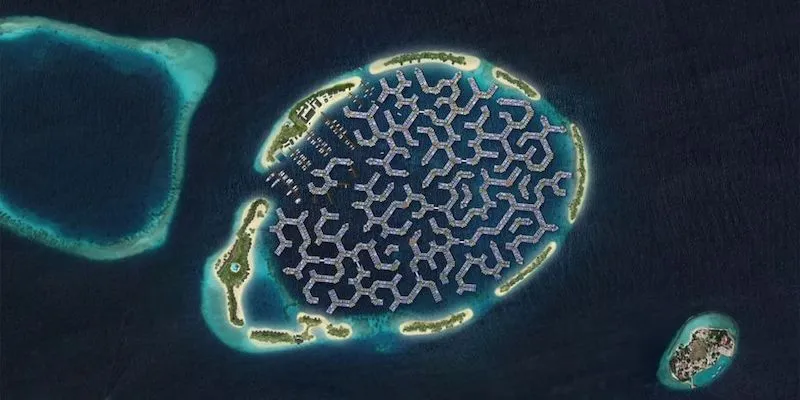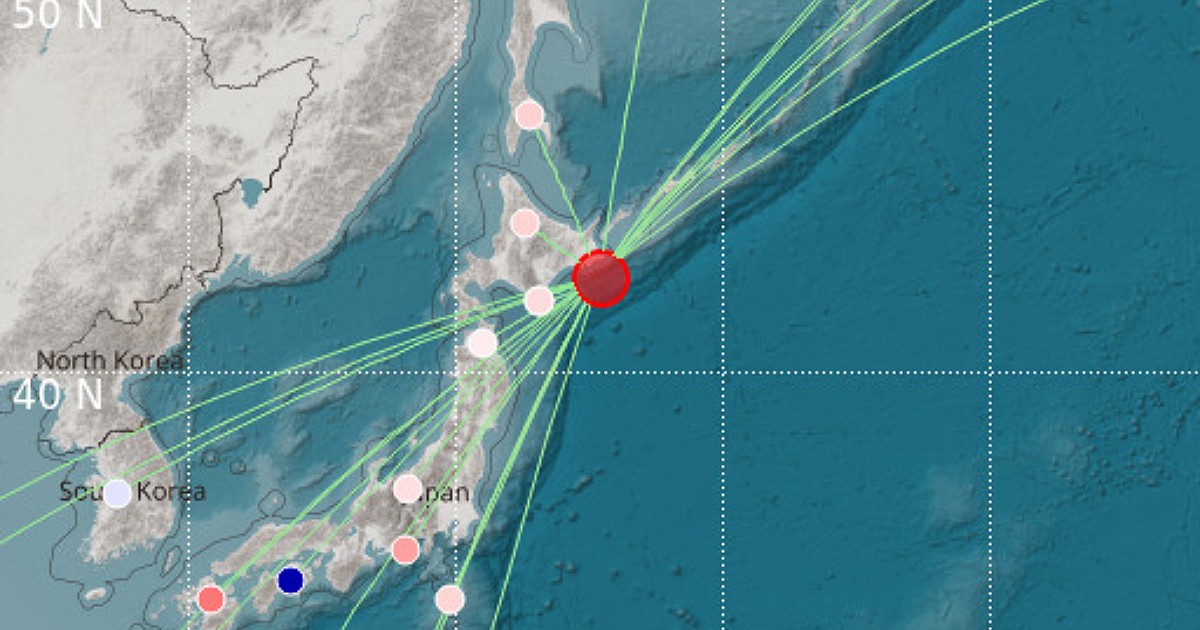The archipelago of the Maldives, about 1,000 kilometers southwest of Sri Lanka, in the Indian Ocean, has long been considered one of the countries most vulnerable to the consequences of climate change:80 percent Of its territory it is located at an altitude of less than a meter above sea level, and it is estimated that due to the rising ocean level, a significant part of it could be completely submerged by the end of the century. Among the possible solutions that local authorities have begun to experiment with, there is a very special one: building one new floating city Which will rise on board the ships for ten minutes from the capital, Male, which when completed will be able to accommodate up to 20,000 residents.
This initiative was born out of a collaboration between the Government of the Maldives and Dutch real estate developer Docklands; The project was carried out by the Netherlands-based architecture firm Waterstudio, which in the past has been involved in the design of hundreds of floating residences, offices, schools and health centers. all over the world.
The new floating city will rise in a lake of 2 square kilometers and will contain thousands of buildings built on a series of “floating islands”, including homes, restaurants, shops, schools and hotels. The buildings will be equipped with electricity obtained from photovoltaic systems and will be supplied with sea water conditioningThat is, they exploit water pumped from great depths to cool environments. On the islands, separated by different canals, you can move around on foot, by bicycle or by electric scooters.
The floating buildings will be built on site in the area and then towed into the lagoon, where they will be connected to a concrete platform anchored to the sea floor by telescopic steel towers. Both this structure and the reefs around the lagoon will allow the floating city to be stabilized, reducing vibrations caused by the waves.
The first buildings will be completed by the end of June, and the first residents will be able to move there in early 2024: the goal is to have a self-sufficient city operating as if it were on the mainland within five years, by the end of 2027.
It has long been known that the Maldives is at risk of inundation and disappearance by 2100 as a result of climate change. However, it seems somewhat complicated to find concrete and feasible solutions to resolve the emergency at the local level, especially given that according to various analyzes the commitments made so far at the global level to reduce polluting emissions and achieve the so-called carbon neutrality They are not enough To avoid further warming by the end of the century, with Serious consequences all over the planet.
At the moment, one of the most ambitious projects launched by the Maldives government is the Construction of the artificial island of Hulhumale, which is also located a few kilometers north of Mali and has been called the “City of Hope”. Like the new floating city, it was primarily designed to house the people who live in the capital today – one of the most densely populated cities in the world – and those who may not own a home in the future. However, his project showed some notable limitations, such as the risks of harming the marine environment and the problem of waste management.
Quinn Ulthes, founder of Waterstudio, he said to CNN That the floating city’s environmental impact has been carefully assessed in collaboration with marine biologists and government authorities, and that the new project will demonstrate that there can be “affordable housing, extended communities and cities that are safe even on the water.”
Patrick Verkoijn, president of the Global Center for Adaptation (GCA), an international organization involved in evaluating possible solutions to adapt to climate change, also appears to agree. According to Verkooijen, building floating buildings could be a functional and economically sustainable strategy to tackle the problem of rising seas: however, much remains to be done to ensure that projects like this are built on a larger scale, more efficiently and faster than ever before. road.
– Read also: “Zero emissions”, good explanation

“Reader. Travel maven. Student. Passionate tv junkie. Internet ninja. Twitter advocate. Web nerd. Bacon buff.”




